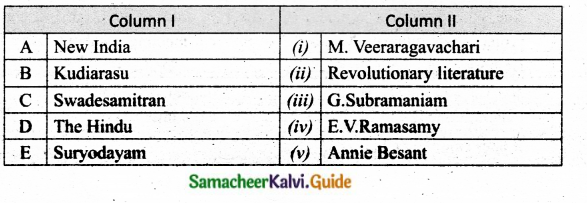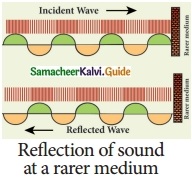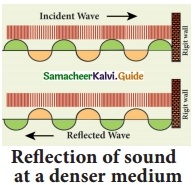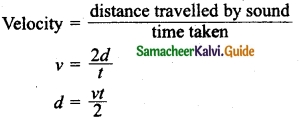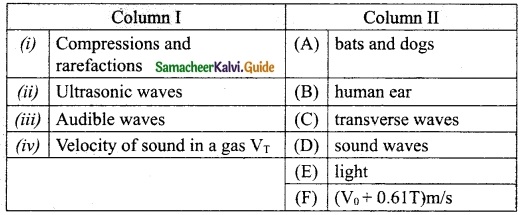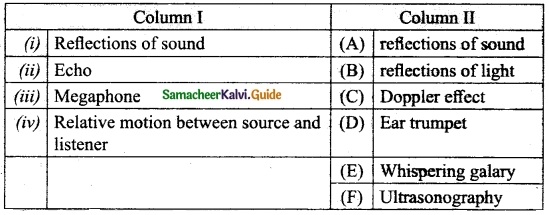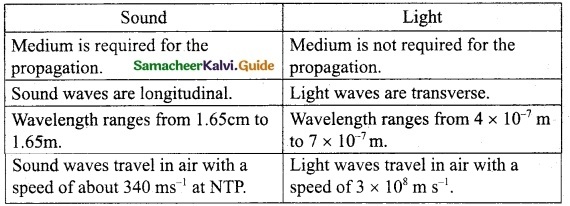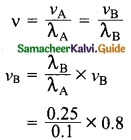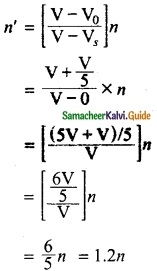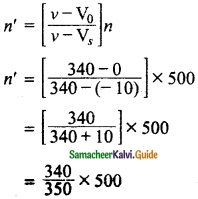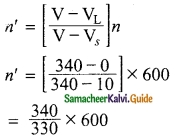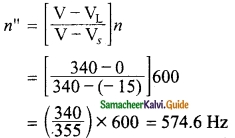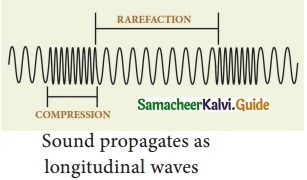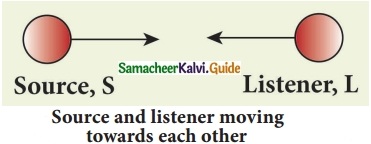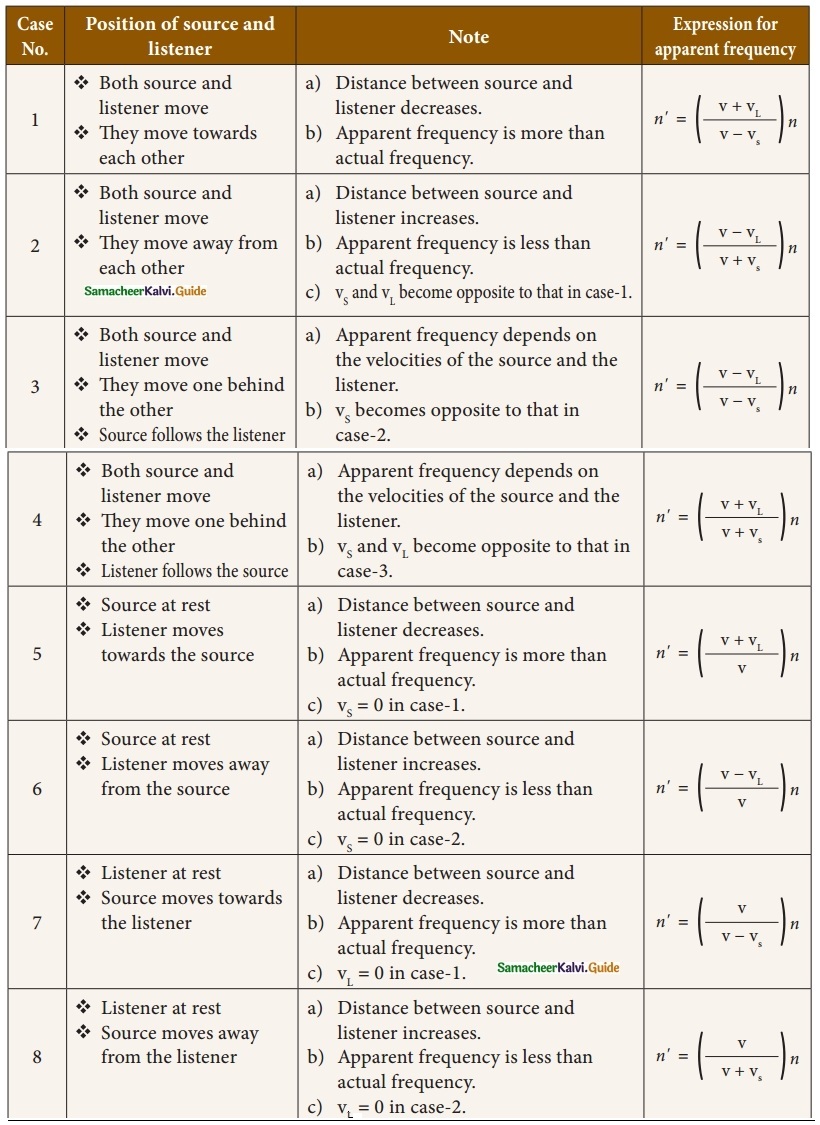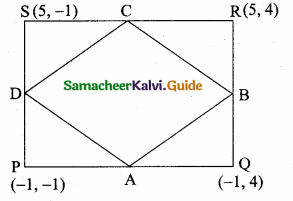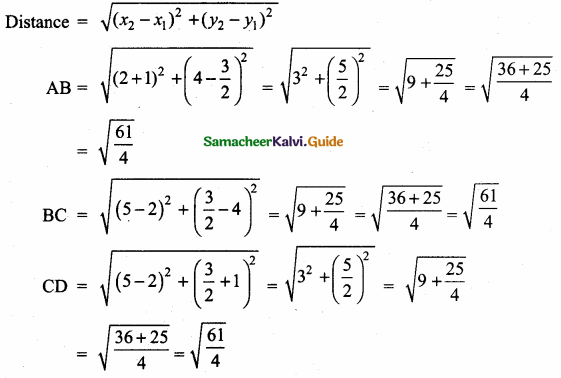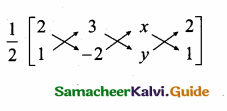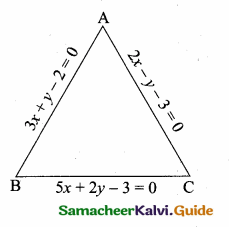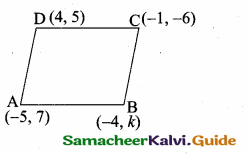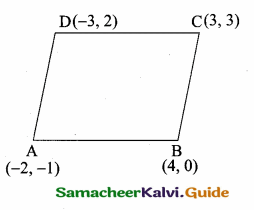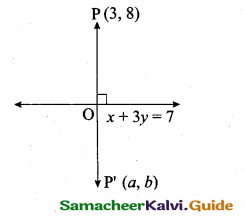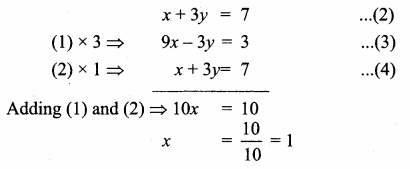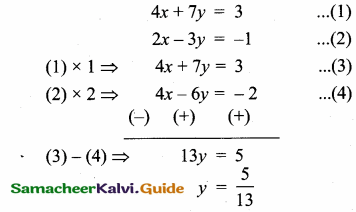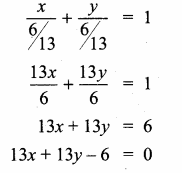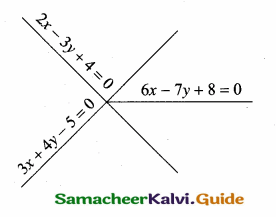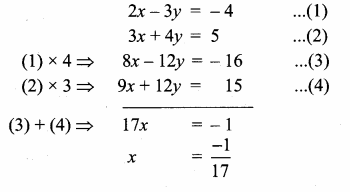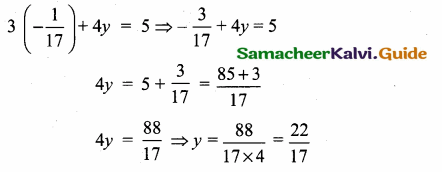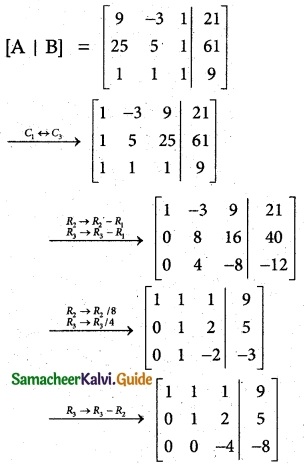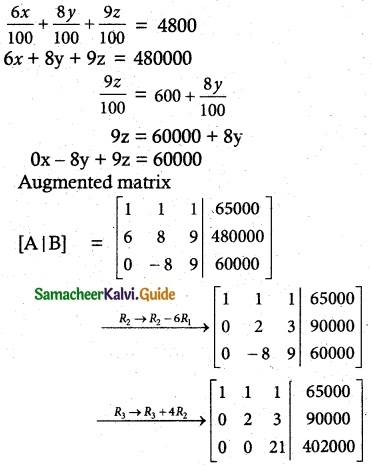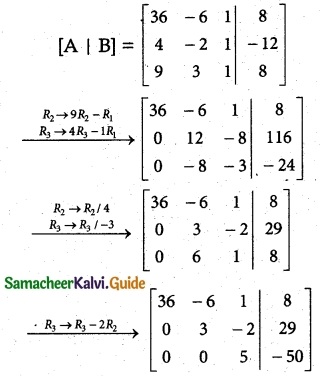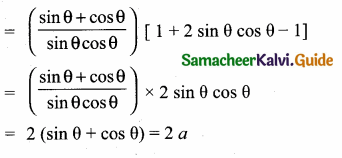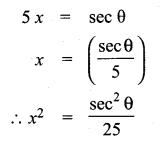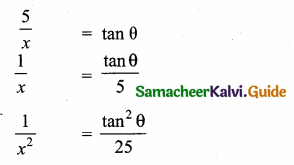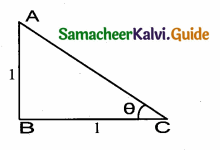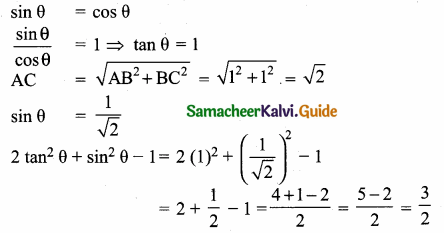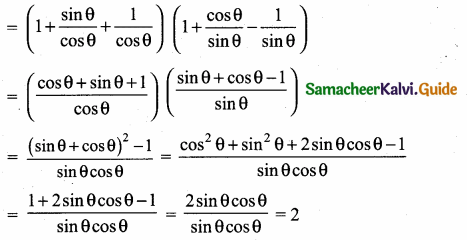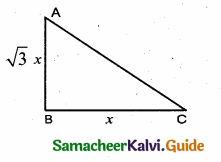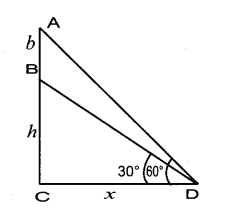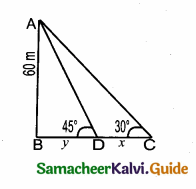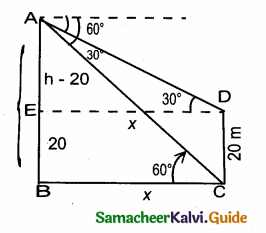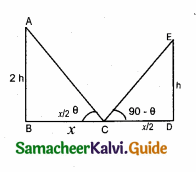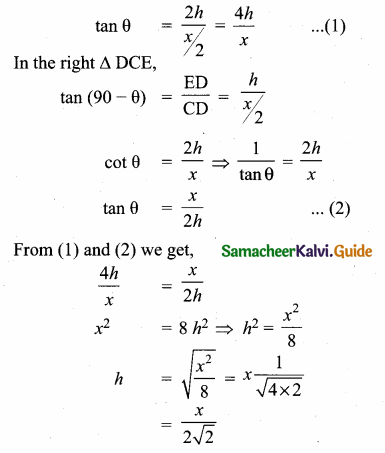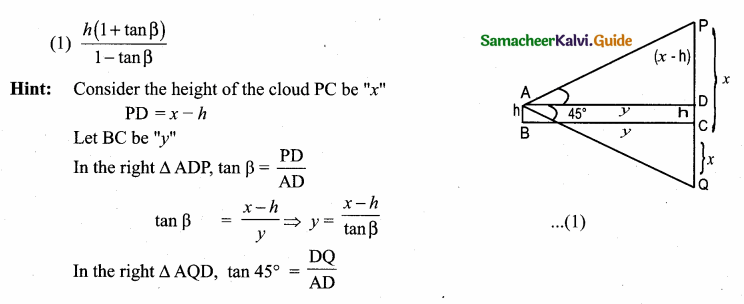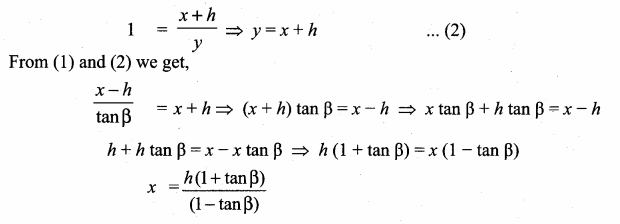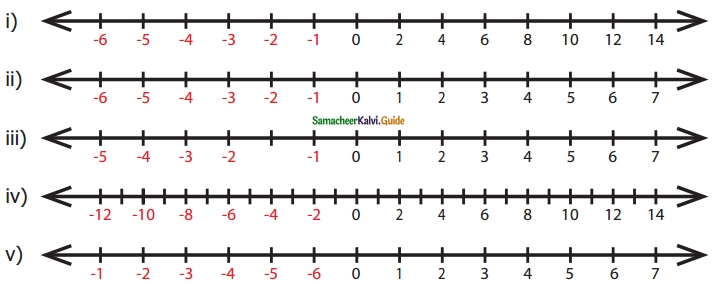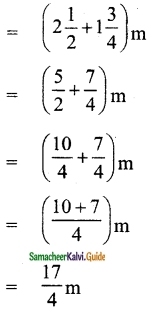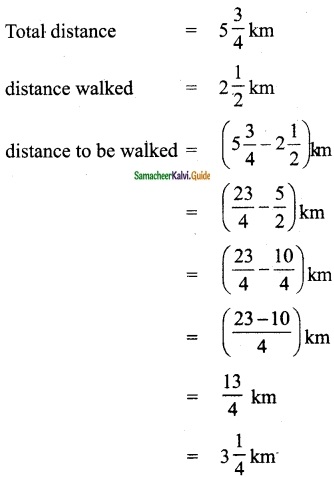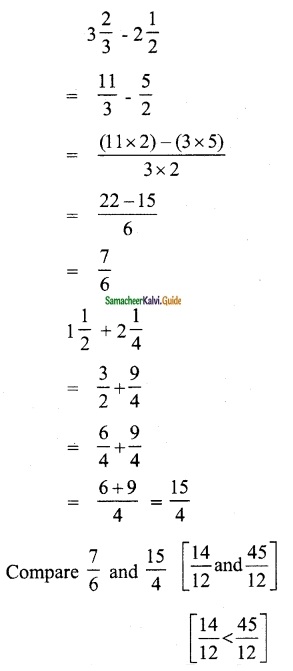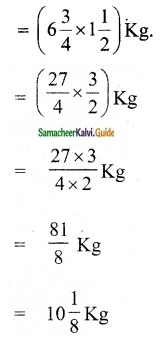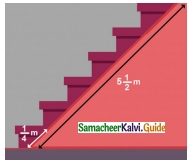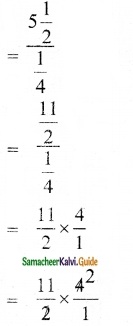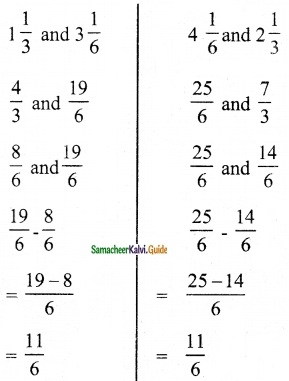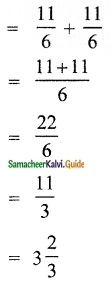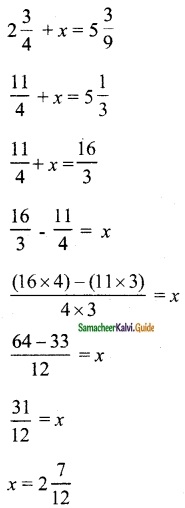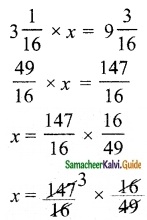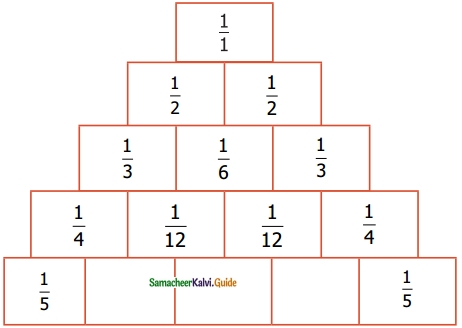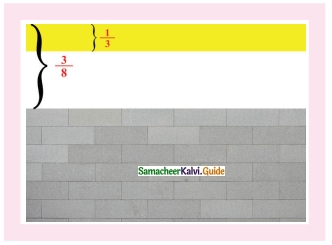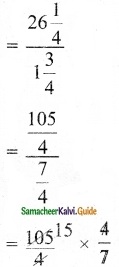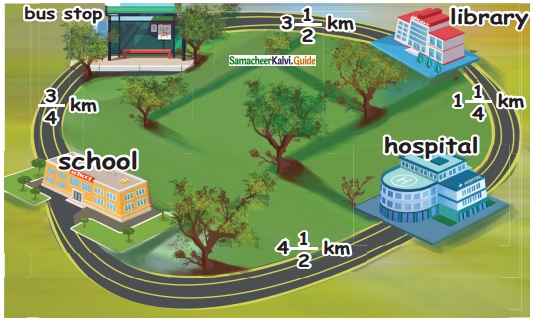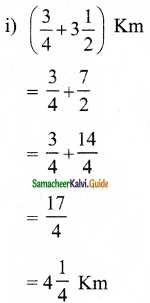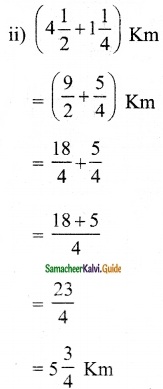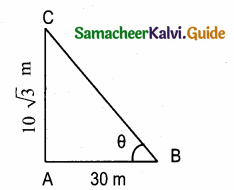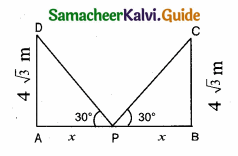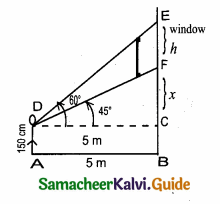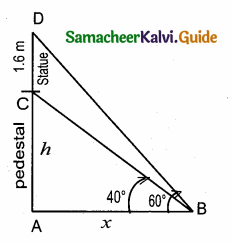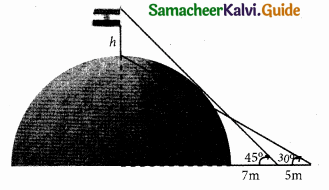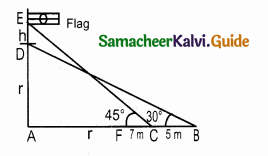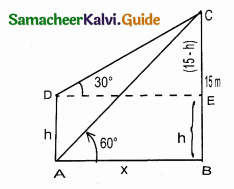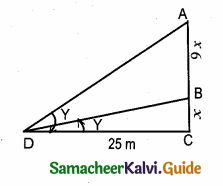Students can download 10th Social Science History Chapter 7 Anti-Colonial Movements and the British of Nationalism Questions and Answers, Notes, Samacheer Kalvi 10th Social Science Guide Pdf helps you to revise the complete Tamilnadu State Board New Syllabus, helps students complete homework assignments and to score high marks in board exams.
Tamilnadu Samacheer Kalvi 10th Social Science Solutions History Chapter 7 Anti-Colonial Movements and the British of Nationalism
Samacheer Kalvi 10th Social Science Anti-Colonial Movements and the British of Nationalism Text Book Back Questions and Answers
I. Choose the correct answer
Question 1.
Which one of the following was launched by Haji Shariatullah in 1818 in East Bengal?
(a) Wahhabi Rebellion
(b) Farazi Movement
(c) Tribal uprising
(d) Kol Revolt
Answer:
(b) Farazi Movement
Question 2.
‘Who declared that “Land belongs to God” and collecting rent or tax on it was against divine law?
(a) Titu Mir
(b) Sidhu
(c) Dudu Mian
(d) Shariatullah
Answer:
(c) Dudu Mian
Question 3.
Who were driven out of their homeland during the process of creation of Zamins under Permanent Settlement?
(a) Santhals
(b) Titu Mir
(c) Munda
(d) Kol
Answer:
(a) Santhals
Question 4.
Find out the militant nationalist from the following.
(a) Dadabhai Naoroji
(b) Justice Govind Ranade
(c) Bipin Chandra Pal
(d) Romesh Chandra
Answer:
(c) Bipin Chandra Pal
Question 5.
When did the Partition of Bengal come into effect?
(a) 19 June 1905
(b) 18 July 1906
(c) 19 August 1907
(d) 16 October 1905
Answer:
(a) 19 June 1905
![]()
Question 6.
What was the context in which the Chotanagpur Tenancy Act was passed?
(a) Kol Revolt
(b) Indigo Revolt
(c) Munda Rebellion
(d) Deccan Riots
Answer:
(c) Munda Rebellion
Question 7.
Who set up the first Home Rule League in April 1916?
(a) Annie Basant
(b) Bipin Chandra Pal
(c) Lala Lajpat Rai
(d) Tilak
Answer:
(d) Tilak
Question 8.
Who drew the attention of the British to the suffering of Indigo cultivation through his play Nil darpanl
(a) Dina Bandhu Mitra
(b) Romesh Chandra Dutt
(c) Dadabhai Naoroji
(d) Birsa Munda
Answer:
(a) Dina Bandhu Mitra
II. Fill in the blanks
- In 1757, Robert Clive was financially supported by ……………….. the moneylenders of Bengal.
- ……………….. was an anti-imperial and anti-landlord movement which originated in and around 1827.
- The major tribal revolt which took place in Chotanagpur region was ………………..
- The ……………….. Act, restricted the entry of non-tribal people into the tribal land.
- Around 1854 activities of social banditry were led by ………………..
- The British Commander of Kanpur killed by the rebels during the 1857 Rebellion was ………………..
- Chota Nagpur Act was passed in the year ………………..
- W.C. Bannerjee was elected the president of Indian National Congress in the year ………………..
Answers:
- Jagat Seth
- The Wahhabi rebellion
- Kol revolt
- Chota Nagpur Tenancy
- Birsingh
- Major General Hugh Wheeler
- 1908
- 1885
![]()
III. Choose the correct statement
Question 1.
(i) The Company received ₹ 22.5 million from Mir Jafar and invested it to propel the industrial revolution in Britain.
(ii) Kols organized an insurrection in 1831-1832, which was directed against government officers and moneylenders.
(iii) In 1855, two Santhal brothers, Sidhu and Kanu, ledtheSanthal Rebellion.
(iv) In 1879, an Act was passed to regulate the territories occupied by the Santhals.
(a) (i), (ii) and (iii) are correct
(b) (ii) and (iii) are correct
(c) (iii) and (iv) are correct
(d) (i) and (iv) are correct
Answer:
(a) (i), (ii) and (iii) are correct
Question 2.
(i) Dudu Mian laid emphasis on the egalitarian nature of Islam and declared that “Land belongs to God”.
(ii) According to the Doctrine of Lapse, new territories under the corrupt Indian rulers were to be annexed.
(iii) The British officials after the suppression of 1857 Revolt were given power to judge and take the lives of Indians without due process of law.
(iv) One of the causes of the failure of the Revolt of 1857 was many of the Indjan princes and zamindars remained loyal to the British.
(a) (ii), (iii) and (iv) are correct
(b) (i), (ii) and (iv) are correct
(c) (i), (iii) and are correct
(d) (i), (ii) and (iii) are correct
Answer:
(c) (i), (iii) and are correct
Question 3.
(i) One of the most significant contributions of the early Indian Nationalists was the formulation of an economic critique of colonialism.
(ii) The early Congress leaders stated that religious exploitation in India was the primary reason for the growing poverty.
(iii) One of the goals of the moderate Congress leaders was to achieve Swaraj or self-rule.
(iv) The objective of the Partition of Bengal was to curtail the Bengali influence and weaken the nationalist movement.
(a) (i) and (iii) are correct
(b) (i), (iii), and (iv) are correct
(c) (ii) and (iii) are correct
(d) (iii) and (iv) are correct
Answer:
(b) (i), (iii), and (iv) are correct
Question 4.
Assertion (A): Under colonial rule, for the first time in Indian history, government claimed a direct proprietary right over forests.
Reason (R): Planters used intimidation and violence to compel farmers to grow indigo.
(a) Both A and R are correct, but R is not the correct explanation of A
(b) Both A and R are wrong
(c) Both A and R are correct and R is the correct explanation of A
(d) A is wrong and R is correct.
Answer:
(b) Both A and R are wrong
Question 5.
Assertion (A): The Revolt of 1857 was brutally suppressed by the British army.
Reason (R): The failure of the rebellion was due to the absence of Central authority.
(a) Both A and R are wrong
(b) A is wrong and R is correct
(c) Both A and R are correct and R is the correct explanation of A
(d) Both A and R are correct, but R is not the correct explanation of A
Answer:
(c) Both A and R are correct and R is the correct explanation of A
IV. Match the following

Answer:
A. (iii)
B. (iv)
C. (i)
D. (v)
E. (ii)
![]()
V. Answer the following questions briefly
Question 1.
How are the peasant uprisings in British India classified?
Answer:
There were nearly a hundred peasant uprisings during British rule. They can be classified into the following categories –
- Restorative rebellions
- Religious movements
- Social Banditry
- Mass insurrection
Question 2.
Write about the Kanpur Massacre of 1857.
Answer:
- The seige of Kanpur was an important episode in the 1857 Rebellion.
- The rebel forces under Nana Sahib besieged the Company forces and civilians in Kanpur.
- They were unprepared for the extended besiege.
- It forced them to surrender to the rebel forces under Nana Sahib, in return for a safe passage to Allahabad.
- The boats in which they were proceeding were burned and most of them were killed including Major General Hugh Wheeler the British Commander of Kanpur.
Question 3.
Name the territories annexed by the British under the Doctrine of Lapse.
Answer:
Satara, Sambalpur, parts of Punjab, Jhansi and Nagpur.
Question 4.
What do you mean by drain of wealth?
Answer:
India was economically subjugated and transformed into a supplier of raw materials. It became a market to dump English manufactures and for the investment of British Capital. So the colonial economy was a continuous transfer of resources from India to Britain without any favourable returns back to India. This is referred as “the drain of wealth”.
Question 5.
Explain the concept of constructive swadeshi?
Answer:
Under Constructive Swadeshi, the self-defeating modest approach of moderates was rejected and self-help was focused on through swadeshi industries, national schools, arbitration courts and constructive programmes in the village. It was totally non-political in nature.
Question 6.
Highlight the objectives of Home Rule Movement.
Answer:
Objectives of the Home Rule Movement:
- To attain self Government within the British empire by constitutional means.
- To obtain the status of dominion a political position.
- To use non-violence constitutional methods to achieve their goals.
Question 7.
Summarise the essence of Lucknow Pact.
Answer:
In the Lucknow Pact that took place in 1916, the Congress Party and the Muslim League agreed that there should be self-government in India as soon as possible. In return of this gesture from the Muslim League, the congress leadership accepted the concept of separate electorate for Muslims. This created a new sense of enthusiasm among the people.
![]()
VI. Answer all the questions under each caption
Question 1.
Deccan riots
(a) When and where did the first recorded incident of rioting against the moneylenders in the Deccan appear?
Answer:
In May 1875 in Supa, a village near Poona the first recorded incident of rioting against the moneylenders in the Deccan appeared.
(b) What was the right given to moneylenders under a new law of the British?
Answer:
Under the new law of the British the moneylenders were given the right to attach the mortgaged land of the defaulters auction it off.
(c) What did it result in?
Answer:
It resulted in the transfer of land from the cultivators to the non-cultivating classes.
(d) Against whom was the violence directed in the Deccan riots.
Answer:
In the Deccan riots violence was directed against the Gujarat money lenders.
Question 2.
The Revolt of 1857
(a) Who assaulted his officer, an incident that led to the outbreak of 1857 Revolt?
Answer:
Mangal Pandey assaulted his officer.
(b) Who was proclaimed the Shahenshah-e-Hindustan in Delhi?
Answer:
The Mughal Emperor Bahadur Shah II was proclaimed the Shahenshah-e-Hindustan in Delhi.
(c) Who was the correspondent of London Times to report on the brutality of the 1857 revolt?
Answer:
The correspondent’s name was William Howard Russell.
(d) What did the Queen’s proclamation say on matters relating to religion?
Answer:
The Queen proclaimed to the Indian people that the British government would not interfere in traditional institutions and religious matters.
![]()
Question 3.
Indian National Congress
(a) What were the techniques adopted by the Congress to get its grievances redressed ?
Answer:
The congress to get its grievances redressed adopted the techniques by way of appeals petitions and delegations.
(b) What do you know of Lal-Bal-Pal triumvirate?
Answer:
Lala Lajpat Rai of Punjab, Bal Gangadara Tilak of Maharashtra and Bipin Chandra Pal of Bengal called as Lai – Bal – Pal.
Lai – Bal – Pal triumvirate were the prominent Congress leaders of militiant nationalists.
(c) Where was the first session of Indian National Congress held?
Answer:
The first session of Indian National Congress was held at Bombay.
(d) How did the British respond to the Swadeshi Movement?
Answer:
The British brutally crushed the Swadeshi Movement. Revolutionaries were hanged. Press was crushed and prominent leaders were arrested and imprisoned for long terms.
VII. Answer in detail
Question 1.
Discuss the causes and consequences of the Revolt of 1857?
Answer:
The Great Rebellion of 1857 is a unique example of resistance to the British authorities, in India. There were several reasons that triggered the Revolt:
(i) The annexation policy of British India created dissatisfaction among the native rulers. The British claimed themselves as paramount, exercising supreme authority. New territories were annexed on the grounds that the native rulers were corrupt, and inept.
(ii) The British annexed several territories such as Satara, Sambalpur, parts of Punjab, Jhansi and Nagpur through the Doctrine of Lapse. This also angered many Indian rulers.
(iii) Indian sepoys were upset with discrimination in salary’ and promotion. They were paid much less than their European counterparts. They felt humiliated and racially abused by their seniors.
Consequences:
(i) India was pronounced as one of the many crown colonies to be directly governed by the Parliament. This resulted in the transfer of power from the East India company to the British crown.
(ii) Queen Victoria proclaimed to the Indian people that the British government would not interfere in traditional institutions and religious matters. It was promised that Indians would be absorbed in government services.
(iii) There came significant changes in the Indian army. The number of Indians was reduced.
Indians were restrained from holding important ranks and position.
(iv) It was also decided that instead of recruiting soldiers from Rajputs, Brahmins and North Indian Muslims, more soldiers would be recruited from the Gorkhas, Sikhs and Pathans.
![]()
Question 2.
How did the people of Bengal respond to the Partition of Bengal (1905)?
Answer:
- In 1899 Lord Curzon was appointed as the Viceroy of India.
- Curzon resorted to repressive measures to undermine the idea of local Government, autonomy of higher educational Institutions and gag the press.
- The idea of partition was planned to suppress the political activities against the British rule in Bengal by creating a Hindu-Muslim divide.
- It was openly stated that the main notion of partition was to curtail Bengali mfluence and to weaken the nationalist movement.
- Bengal was Partitioned into two units Bengali Hindus (West Bengal) and Muslims (East Bengal).
- Partition of Bengal in 1905 led to widespread protests all across India, starting a new phase of the Indian National movement.
- The partition instead of dividing, united the people of Bengal.
- People marched on the streets of Calcutta in thousands singing Bande mataram.
- The partition led to the Boycott of the British goods and Swadeshi movement.
Question 3.
Attempt a narrative account of how Tilak and Annie Besant by launching Home Rule Movement sustained the Indian freedom struggle after 1916?
Answer:
(i) The Indian National Movement was revived and also radicalised during the Home Rule , League Movement that lasted from 1915 to 1918. It was led by Lokamanya Tilak and Annie Besant.
(ii) The objective of the Home Rule Movement was to attain self-government within the British Empire.
(iii) Tilak set up the first Home Rule League in April 1916. In September 1916, after repeated demands of her followers, Annie Besant decided to start the Home Rule League without the support of the Congress. Both the Leagues worked independently.
(iv) The Home Rule Leagues were utilised to carry extensive propaganda through press, speeches, public meetings, lectures, discussions and touring in favour of self government.
(v) Both the leagues succeeded in enrolling young people in large numbers and extending the movement to the rural areas.
![]()
VIII. Activity
Question 1.
Identify the Acts passed in British India from 1858 to 1919, with a brief note on each.
Answer:
Government of India Act (1858):
- It was passed to end the rule of the East India Company and transfer the power to the British Crown.
- The British Governor General Post was designated as viceroy of India, who became the representative of the British Monarch.
Indian Council Act – 1892:
- The British Parliament introduced various amendments to the composition and functions of legislative council, increased the number of additional members to be represented both in central and provinces.
- The members were given the right to ask questions on budget.
- This Act laid the foundation of parliamentary system in India.
- It is a landmark in the constitutional development.
Indian Council Act of 1909:
- Popularly known as Minto – Morley Reforms.
- This Act directly introduced the elective principle to membership in the imperial and local legislative councils.
- It increased the involvement of Indians limitedly in the British Governance.
Montagu – Chelmsford Reform (1919):
- The British Parliament passed this Act to expand participation of Indians in the division of executive branch of each provincial Government in to authoritarian and popularly responsible section for the provinces of British India.
- Embodied reforms recommended in the report of the secretary of state of India.
- This Act promised gradual progress of India towards self – Government.
Dy Archy (1919):
- This Act introduced dual Government for the provinces of British India. One is accountable and the other one non accountable.
- It marked the 1st introduction of democratic principle into the executive branch of British administration.
- It was the association of Indians with the legislation work.
- Introduced Port – folio system.
Question 2.
Mark the important centres of 1857 Revolt on an outline map.
Answer:
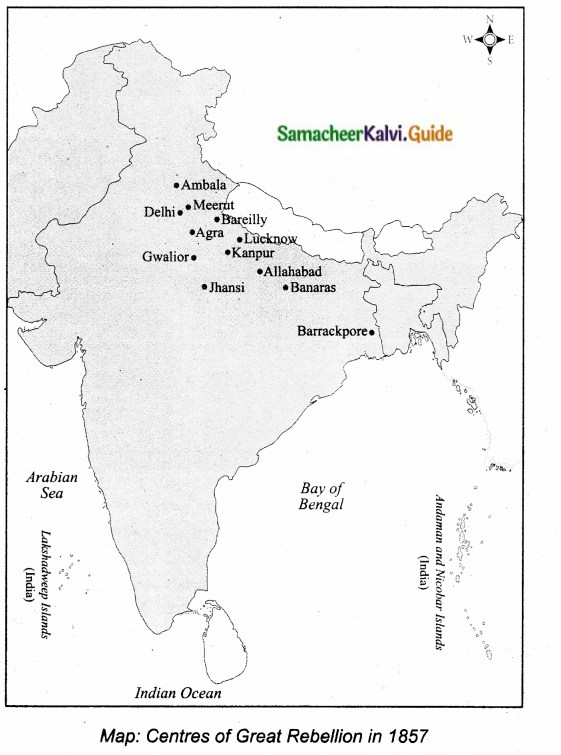
Question 3.
Prepare an album with pictures of frontline leaders of all the anti-colonial struggles launched against the British.
Answer:
Pictures of Moderates
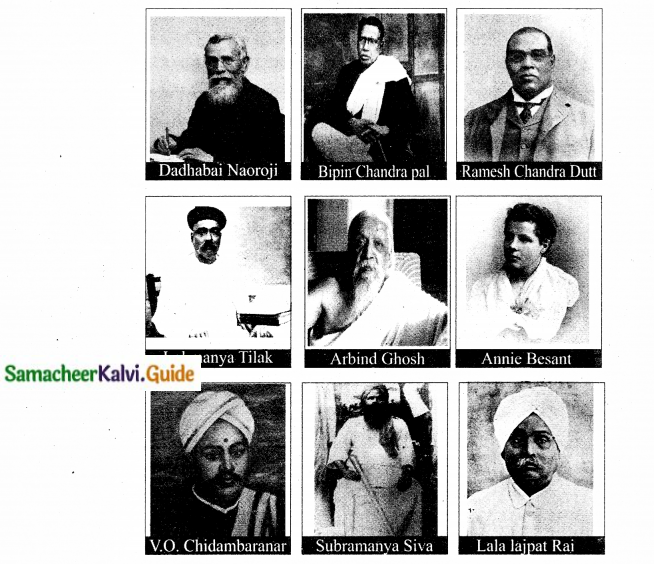
Tribal Rebellion and other movement

![]()
Samacheer Kalvi 10th Social Science Anti-Colonial Movements and the British of Nationalism Additional Important Questions and Answers
I. Choose the correct answer
Question 1.
The Nawab of Bengal ……………….. was defeated by the East India company at the Battle of Plassey.
(a) Shuja-ud-daullah
(b) Siraj-ud-daullah
(c) Mirjafar
(d) Mir Kasim
Answer:
(b) Siraj-ud-daullah
Question 2.
Indian Historians describes the revolt of 1857 as ……………….
(a) Sepoy mutiny
(b) First war of Indian Independence
(c) Military revolt
Answer:
(b) First war of Indian Independence
Question 3.
The collective farming of the tribals of Ranchi was known as:
(a) Jhum
(b) Bethbegari
(c) Khunkatti
(d) Ryotwari
Answer:
(c) Khunkatti
Question 4.
The peasants had to pay heavy …………….
(a) land taxes
(b) tariffs
(c) service taxes
Answer:
(a) land taxes
![]()
Question 5.
The ……………….. had leased out to moneylenders the job of revenue collection.
(a) Raja of Chota Nagpur
(b) European officers
(c) Nawab of Bengal
(d) Birsaite Raj
Answer:
(a) Raja of Chota Nagpur
Question 6.
The sepoys broke into open revolt at …………..
(a) Meerut
(b) Kanpur
(c) Barrackpore
Answer:
(a) Meerut
Question 7.
On ……………….. a band of sepoys from Meerut marched to the Red Fort in Delhi.
(a) 1st May 1858
(b) 11th May 1852
(c) 11th May 1857
(d) 19th September 1916
Answer:
(c) 11th May 1857
Question 8.
After the 1857 revolt the Governor-General of India was designated as …………….
(a) Viceroy of India
(b) Ruler of India
(c) Minister of India
Answer:
(a) Viceroy of India
Question 9.
……………….. led the Revolt at Bareilly.
(a) Bahadur Shah – II
(b) Khan Bahadur
(c) Nana Sahib
(d) Kunwar Singh
Answer:
(b) Khan Bahadur
Question 10.
Rani Lakshmi Bai led the revolt at …………….
(a) Kanpur
(b) Central India
(c) Lucknow
Answer:
(b) Central India
Question 11.
The play “Nil Darpan” by ……………….. did much to draw attention in India and Europe to the plight of the indigo growers.
(a) Dina Bandhu mitra
(b) Bankim Chandra Chatterjee
(c) Lockmanya Tilak
(d) Ranajit Guha
Answer:
(a) Dina Bandhu mitra
![]()
Question 12.
In 1858, the Royal Durbar was held at …………..
(a) Meerut
(b) Allahabad
(c) Delhi
Answer:
(b) Allahabad
Question 13.
The Madras Native Association was formed in the year:
(a) 1806
(b) 1852
(c) 1884
(d) 1852
Answer:
(b) 1852
Question 14.
Which one was not a trading company?
(a) The Portuguese
(b) The French
(c) The Japanese
Answer:
(c) The Japanese
Question 15.
……………….. lent his services to facilitate the formation of Indian National Congress.
(a) A.O.Hume
(b) W.C.Baneijee
(c) Mrs. Annie Besant
(d) V.O.Chidambarampillai
Answer:
(a) A.O.Hume
II. Fill in the blanks
- The ………………….. helped to unite the Congress party after the Surat split.
- The ………………….. movement enhanced to participation of masses in Nationalist Politics.
- The British mainly responded to political activities of nationalists by repression and …………………..
- The Indian National Movement was revived and ………………….. during the Home Rule movement.
- ………………….. launched the Swadeshi Steam Navigation Company in Tuticorin.
- One of the common goals of the extremist leaders was to achieve …………………..
- For ………………….. Swaraj was the attainment of complete autonomy and total freedom from foreign rule.
- ………………….. decided to started the Home Rule League without the support of the Congress.
- The Home Rule Movement in India borrowed much of its principles from the …………………..
- In the ………………….. session of Indian National Congress (1916) decided to admit the militant faction in to the party.
- Pherozeshah Metha and Gokhale two main voices of opposition against militant faction had died in …………………..
- Bengal was officially partitioned on ………………….. by Lord Curzon.
- The official declaration of partition of Bengal was observed as a day of …………………..
- In a divided Bengal Curzen made the Bengali speaking people to a …………………..
- In the year 1899 ………………….. was appointed as the viceroy of India.
- Early Indian Nationalists advocated …………………..
- The formation of the ………………….. in 1885 was intended to establish an All India Organisation.
- The early leaders felt that ………………….. was the main obstacle to the India’s Economic Development.
- One of the key demand of the Indian National Congress was creation of ………………….. at provincial and central level.
- ………………….. played a significant role in propagating the ideas of Nationalism.
- Under British rule peasants were forced to pay revenue directly to the …………………..
- Vicious cycle of debt forced the peasants to abandon ………………….. in 1875.
- The British planters forced the cultivators to grow ………………….. rather than food crops.
- ………………….. was appointed by the British Parliament to look into the Indian affairs after 1857 revolt.
- In November 1858 the power to govern India was transferred from ………………….. to the British Crown.
- The ………………….. was an important episode in the rebellion of 1857.
- The Kingdom of Jhansi was annexed under …………………..
- De throning of many Indian rulers affected the livelihood of ………………….. due to lose of patronage.
- ………………….. of the people against the British took the form of a people’s revolt.
- Thousands of weavers were thrown out of employment due to the dumping of …………………..
- By the beginning of June 1857 except ………………….. and ………………….. British Rule in North India had disappeared because of the mutineers.
- The precursor to the revolt was the introduction of new ………………….. of the Enfiled Rifles.
- The ………………….. claimed themselves as paramount power.
- The ………………….. was the first major revolt of armed forces accompanied by civilian rebellion.
- In the 1890’s ………………….. offered resistance against the alienation of tribal people from their land.
- The ………………….. prompted the British to formulate a policy on Tribal land.
- The Munda people were forcefully recruited as ………………….. to work on plantations.
- The Munda rebellion movement received an impetus when ………………….. declared himself as the messenger of God.
- The disillusionment with ………………….. aggravated the miseries of Munda people.
- One of the prominent tribal rebellion in Ranchi was known as …………………..
- After the battle of ………………….. the British adopted a policy of territorial expansion.
- The British ………………….. was rapidly mechanized with the money received by the company from Mir Jafar.
- India was led to the path of because of Britsh manufactured goods.
- ………………….. was forced to create a market for the products from Britain.
- The plunder of India by the ………………….. continued for nearly 190 years.
- There were nearly a hundred ………………….. during the British rule.
- The leaders of ………………….. movements were looked upon by their people as heroes of their cause.
- The ………………….. are usually leaderless and spontaneous uprising.
- The subletting of land by the zamindars increased the ………………….. on the peasants.
- Wahhabi Rebellion originated in 1827 in and around ………………….. of Bengal.
Answer:
- Home Ruler Movement
- Swadeshi
- Reconciliation
- Radicaliszed
- V.O.Chidambaranar
- Swaraj or Self Rule
- Tilak
- Mrs. Annie Besant
- Irish Home Rule Movement
- Lucknow session
- 1915
- 16th October 1905
- Mourning
- Linguistic minority
- Lord Curzon
- Industrialisation
- Indian National Congress
- Colonialism
- Legislative councils
- Print media
- Government
- agriculture
- Indigo plant
- Secretary of State
- English East India Company
- Seige of Kanpur
- Doctrine of Lapse
- Artisans and handicrafts persons
- Collective anger
- British manufacture
- Punjab and Bengal
- greased cartridges
- British
- Great Rebellion of 1857
- Tribal chiefs
- Munda rebellion
- Indentured labourers
- Birsa Munda
- Christian missionaries
- Ulugalan rebellion
- Plassey
- Textile industry
- De. industrialisation
- India
- East India company
- Peasant uprisings
- Social banditry
- Mass insurrection
- Tax burden
- Barasat
![]()
III. Choose the correct statement
Question 1.
(i) The urban elite of India was busy responding to the western ideas through socio – religious reform movements.
(ii) The traditional elite and peasantry wanted to restore pre – colonial order by revolts.
(iii) The practice of letting out and subletting of land complicated the industrial relations.
(iv) Changes introduced in the land tenures significantly altered the agrarian relations.
(a) (i), (ii) and (iv) are correct
(b) (i), (ii) and (iii) are correct
(c) (i), (iii) and (iv) are correct
(d) (ii), (iii) and (iv) are correct
Answer:
(a) (i), (ii) and (iv) are correct
Question 2.
(i) The commercialisation of forest led to the disintegration of the traditional tribal system.
(ii) The usury and forcible eviction of tribals from their land led to the resentment of kols.
(iii) The pushed out santhals were forced to rely on the moneylenders for their subsistence.
(iv) Santhals felt secured under the British.
(a) (i), (ii) and (iv) are correct
(b) (i), (iii) and (iv) are correct
(c) (i), (ii)-and(iii) are correct
(d) (ii), (iii) and (iv) are correct
Answer:
(c) (i), (ii)-and(iii) are correct
Question 3.
(i) The British annexed more territories through two major policies.
(ii) Indian sepoys accepted the new dress code and overseas service.
(iii) Before loading into Enfiled Rifle the cartridges had to be bitten off.
(iv) The Indian Sepoys felt humiliated and racially abused by their seniors.
(a) (i) and (iii) are correct
(b) (i), (ii) and (iii) are correct
(c) (i), (ii) and (iv) are correct
(d) (i), (iii) and (iv) are correct
Answer:
(d) (i), (iii) and (iv) are correct
Question 4.
Assertion (A): The mutiny was equally supported by an aggrieved rural society of North India.
Reason (R): Sepoys working in British army were infact peasants in uniform.
(a) Both A and R are wrong.
(b) Both A and R are correct and R is the correct explanation of A.
(c) A is correct R is wrong.
(d) Both A and R are correct but R is the not the correct explanation of A.
Answer:
(b) Both A and R are correct and R is the correct explanation of A.
Question 5.
Assertion (A): India extended its support to the British in world war I. Reason (R): Hoping for the attainment of self – Government after the war.
(a) A is correct R is wrong.
(b) Both A and R are wrong.
(c) Both A and R are correct but R is not the correct explanation of A.
(d) Both A and R are correct and R is the correct explanation of A.
Answer:
(d) Both A and R are correct and R is the correct explanation of A.
![]()
IV. Match the following
Question 1.
Match the Column I with Column II.

Answer:
A. (iii)
B. (v)
C. (iv)
D. (i)
E. (ii)
Question 2.
Match the Column I with Column II.

Answer:
A. (ii)
B. (v)
C. (iv)
D. (i)
E. (ii)
Question 3.
Match the Column I with Column II.
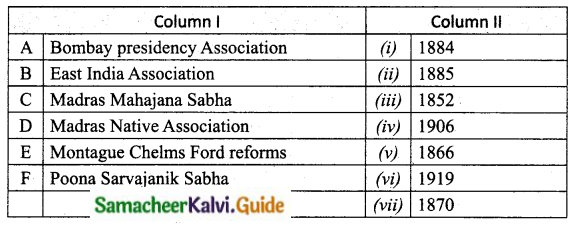
Answer:
A. (ii)
B. (v)
C. (i)
D. (iii)
E. (vi)
F. (vii)
![]()
V. Answer the following question briefly
Question 1.
What caused huge loss of revenue in Bengal?
Answer:
Aurangzeb’s farman had granted the company only the right to trade duty free. But the officials of the company, who were carrying on private trade on side also stopped paying duty. This caused a huge loss of revenue for Bengal.
Question 2.
Mention some of the issues of peasants that added to the sense of resentment against the British.
Answer:
- The concept of private property rights in land.
- Rigorous collection of land revenue.
- Encroachment of tribal land by non-tribal people.
- Interference of Christian Missionaries in the socio – religious life of the local people.
Were some of the issues of resentment against the British.
Question 3.
Why did the Battle of Plassey become famous?
Answer:
It was the first major victory the company won in India.
Question 4.
What were the reasons for Tribal upraising?
Answer:
- Under colonial rule the Government claimed a direct proprietary right over forests.
- The commercialisation of forests led to the disintegration of the traditional tribal system.
- It encouraged the incursion of tribal areas by non-tribal people such as contractors, moneylenders traders, land grabbers.
- This led to the wide spread loss of adivasi land and their displacement from their traditional habitats. So Tribal resistance arose.
Question 5.
What were the grievances of the company regarding the Nawabs of Bengal?
Answer:
The company declared that the unjust demands of the local officials were ruining the trade of the company. Trade could flourish only if the duties were removed. It was also convinced to expand trade, it had to enlarge its settlements, buy up villages and rebuild its forts.
Question 6.
Name the early leaders who criticized about colonial economy.
Answer:
Dadabhai Naoroji, Justice Ranade and Romesh Chandra Dutt strongly criticised about the colonial economy.
They clearly stated that the prosperity of the British lay in the economic and political subjugation of India.
They concluded that the colonialism was the main obstacle to the India’s economic development.
Question 7.
Which battle did Robert Clive fight in 1757 and against whom?
Answer:
In 1757, he fought the Battle of Plassey against Siraj-ud-daulah.
![]()
VI. Answer all the questions under each caption
Question 1.
Political causes for the Revolt of 1857.
(a) Who introduced subsidiary Alliance?
Answer:
Lord Wellesley introduced subsidiary Alliance.
(b) Name the policy introduced by Lord Balhousie.
Answer:
Lord Dalhousie introduced the policy of “Doctrine of Lapse”.
(c) What was the order issued by the British against the Mughal emperor?
Answer:
The British Government had ordered that the Mughal emperor had to give up their ancestral palace and Red fort.
(d) Why did Nana Saheb develop a grudge against the British.
Answer:
The British stopped the pension to Nana Saheb. So he developed a grudge against the British.
Question 2.
Great Rebellion of 1857
(a) What was the biggest challenge witnessed by the British in 1857?
Answer:
The Great Rebellion by the Sepoys and the civilians.
(b) What was witnessed by both sides during the revolt?
Answer:
Unprecedented violence
(c) What were the causes of the revolt?
Answer:
- Annexation policy of the British in India.
- Insensitivity of the British to Indian cultural sentiments.
(d) What was the people’s opinion on the new regulations of the British.
Answer:
There was always a suspicion among the people regarding British new regulations intention.
![]()
Question 3.
Wahhabi Rebellion in Barasat
(a) Who led the Wahhabi Rebellion? Write a few lines about him.
Answer:
Titu Mir, an Islamic preacher led this rebellion. He was deeply influenced by the Wahhabi teachings. He became an important figure among the predominantly Muslim peasantry oppressed under the zamindari system.
(b) How did this movement acquire an anti-Hindu complexion?
Answer:
The majority of zamindars were Hindus. Thus, the movement acquired an anti-Hindu complexion.
(c) what happened on 6 November 1831?
Answer:
On 6 November 1831, the first major attack was made in the town of Pumea. Titu Mir immediately declared freedom from British Rule.
(d) How did the British respond to this rebellion?
Answer:
The British sent a large number of Troops to Narkelberia. Titu Mir along with his soldiers were killed in the staiggle.
Question 4.
Peasant and Tribal Resistance
(a) What was the nature of the resistance against the British rule emerged in rural India?
Answer:
More aggressive response emerged in rural India.
(b) Who revolted against the British in rural areas?
Answer:
Traditional elite and peasants along with tribals revolted.
(c) What did they seek for?
Answer:
They sought for the restoration of the Pre-colonial order and not the removal of the British.
(d) What was the outlook of the tribals on British?
Answer:
The tribal people started looking at the British as invaders and encroachers.
![]()
VII. Answer in detail
Question 1.
Enumerate the cause for the failure of the Great Revolt of 1857.
Answer:
Administrative changes:
- Disunity among the Indians was the first and the foremost cause.
- A large number of rulers of the Indian states and the big zamindars did not join the movement,
- The rulers of the Indian states, who did not support the movement, remained neutral.
- The educated Indians did not support the movement.
- The telegraph and postal communication proved very helpful to the British for proper military actions and sending their reinforcements at the earliest time.
- The rebellious soldiers were short of modem weapons and other materials of war.
- The rebellious soldiers had to fight with traditional weapons which were no match to modem weapons possessed by the British forces.
- The revolt was not extended beyond North.
- The Indian leaders like Nana Saheb, Tantia Tope, Rani Lakshmi Bai where no match to the British generals.
- The revolt broke out prematurely and the preparations for the revolt remained incomplete.
- The organization and the planning of the rebels was very poor.
- The Indian leaders were brave and selfless but they lacked unity of command and discipline.
- The revolutionaries had no common idea.
- The Muslims wanted to revive Mughal rule and the Hindus wanted to receive the Peshwa Raj.
- The British diplomacy of Divide and Rule prevented most of the Indian mlers to join together for a common cause.
Question 2.
What was the objective of the partition of Bengal (1905) and what was its result?
Answer:
- The main objective of partition of Bengal was to divide the Hindu – Muslim unity and to influence and weaken the nationalist movement.
- Bengal was partitioned into two administrative units.
- Reduced the Bengali – speaking people to a linguistic minority in a divided Bengal.
- Curzon assured Muslims that in the new province of East Bengal Muslim would enjoy a unity.
Result:
- Curzon thought the partition would divide the Bengali people on religious line.
- Instead the partition united the people of Bengal.
- The growth of the vernacular newspapers played a vital role in building a sense of proud Bengali identity.
- The day Bengal was officially partitioned (16th Oct 1905) was declared as a day of mourning.
- Thousands of people took bath in Ganga and marched on the streets of Calcutta singing Bande Mataram.
![]()
Question 3.
Throw light on the Farazi Movement.
OR
Highlight the different phases of the Farazi Movement under Haji Shariatullah and his son Dudu Mia.
Answer:
Farazi Movement under Haji Shariatullah:
The Farazi Movement was launched by Haji Shariatullah in 1818, in the parts of eastern Bengal. The movement advocated the participants to keep themselves away from conflict with the zamindars and subsequently with the British, who favoured the zamindars to suppress the peasant uprising.
Farazi Movement under Dudu Mian:
After the death of Shariatullah in 1839, the movement was led by his son Dudu Mian. He called upon the peasant not to pay tax. The movement became popular on a simple doctrine that land and all wealth should be equally enjoyed by the common mass. Dudu Mian laid emphasis on the egalitarian nature of religion and declared that “Land belongs to God’’ and collecting rent or levying taxes on it was therefore against the divine law. The movement spread far and wide and was joined by a huge number of peasants. There were violent crashes throughout 1840s and 1850s with the zamidars and planters. The movement continued to resist even after the death of Dudu Mian in 1862.
Question 4.
What were the main objectives and key demands of Indian National Congress?
Answer:
The main objectives of Indian National Congress were to develop and consolidate the sentiments of national unity and loyalty to Britain.
Some of the key demands were:
- Creation of legislative councils at provincial and central level.
- Reducing military expenditure.
- Holding civil services exams in India as well as in England.
- Promotion of Indian industries and an end to unfair tariffs and an end to unfair tariffs and excise duties.
- Extension of trial by jury.
- Increasing the number of elected members in the legislative council.
- Police reforms
- Reduction of Home charges.
- Reconsideration of forest laws.
- Separating Judicial and executive functions.



